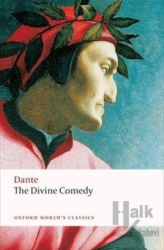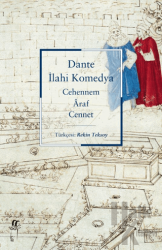The Divine Comedy: Purgatory

The Divine Comedy (Italian: la Divina Commedia, first called the Divina Commedia only in 1555 by a Venetian publisher) is an epic poem written by Dante Alighieri between 1308 and his death in 1321. It is widely considered the preeminent work of Italian literature, and is seen as one of the greatest works of world literature. The poem's imaginative and allegorical vision of the afterlife is a culmination of the medieval world-view as it had developed in the Western Church. It helped establish the Tuscan dialect in which it is written as the standardized Italian. It is divided into three parts, the Inferno, Purgatorio, and Paradiso.
On the surface, the poem describes Dante's travels through Hell, Purgatory, and Heaven; but at a deeper level, it represents allegorically the soul's journey towards God. At this deeper level, Dante draws on medieval Christian theology and philosophy, especially the writings of Thomas Aquinas.
The work was originally simply titled Commedia and was later christened Divina by Giovanni Boccaccio. The first printed edition to add the word divine to the title was that of the Venetian humanist Lodovico Dolce, published in 1555 by Gabriele Giolito de' Ferrari
- Açıklama
The Divine Comedy (Italian: la Divina Commedia, first called the Divina Commedia only in 1555 by a Venetian publisher) is an epic poem written by Dante Alighieri between 1308 and his death in 1321. It is widely considered the preeminent work of Italian literature, and is seen as one of the greatest works of world literature. The poem's imaginative and allegorical vision of the afterlife is a culmination of the medieval world-view as it had developed in the Western Church. It helped establish the Tuscan dialect in which it is written as the standardized Italian. It is divided into three parts, the Inferno, Purgatorio, and Paradiso.
On the surface, the poem describes Dante's travels through Hell, Purgatory, and Heaven; but at a deeper level, it represents allegorically the soul's journey towards God. At this deeper level, Dante draws on medieval Christian theology and philosophy, especially the writings of Thomas Aquinas.
The work was originally simply titled Commedia and was later christened Divina by Giovanni Boccaccio. The first printed edition to add the word divine to the title was that of the Venetian humanist Lodovico Dolce, published in 1555 by Gabriele Giolito de' FerrariFormat:Kitap
- Taksit Seçenekleri
- Axess KartlarTaksit SayısıTaksit tutarıGenel ToplamTek Çekim8,668,6624,509,0133,069,1861,569,3591,069,53Finansbank KartlarıTaksit SayısıTaksit tutarıGenel ToplamTek Çekim8,668,6624,509,0133,069,1861,569,3591,069,53Bonus KartlarTaksit SayısıTaksit tutarıGenel ToplamTek Çekim8,668,6624,509,0133,069,1861,569,3591,069,53Paraf KartlarTaksit SayısıTaksit tutarıGenel ToplamTek Çekim8,668,6624,509,0133,069,1861,569,3591,069,53Maximum KartlarTaksit SayısıTaksit tutarıGenel ToplamTek Çekim8,668,6624,509,0133,069,1861,569,3591,069,53World KartlarTaksit SayısıTaksit tutarıGenel ToplamTek Çekim8,668,6624,509,0133,069,1861,569,3591,069,53Diğer KartlarTaksit SayısıTaksit tutarıGenel ToplamTek Çekim8,668,662--3--6--9--
- Yorumlar
- Yorum yazBu kitabı henüz kimse eleştirmemiş.
- Yayınevinin Diğer Kitapları
- Yazarın Diğer Kitapları




























